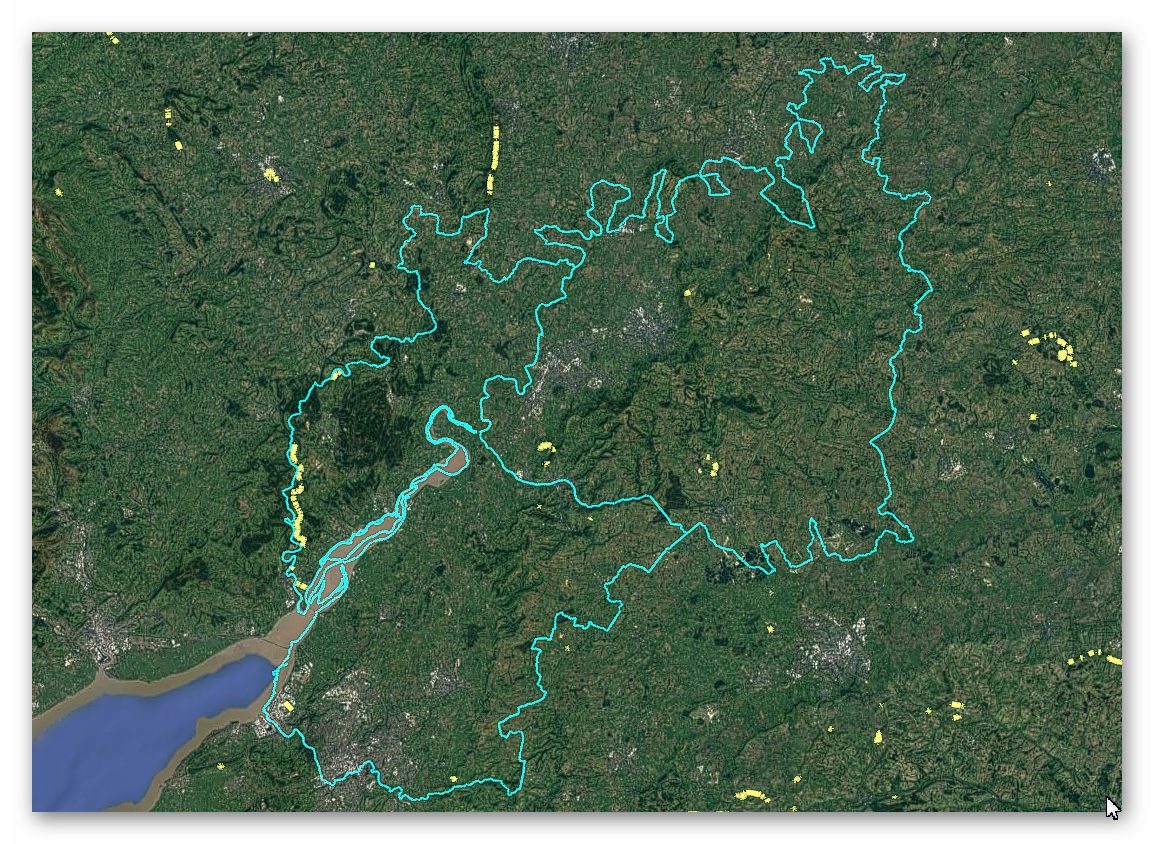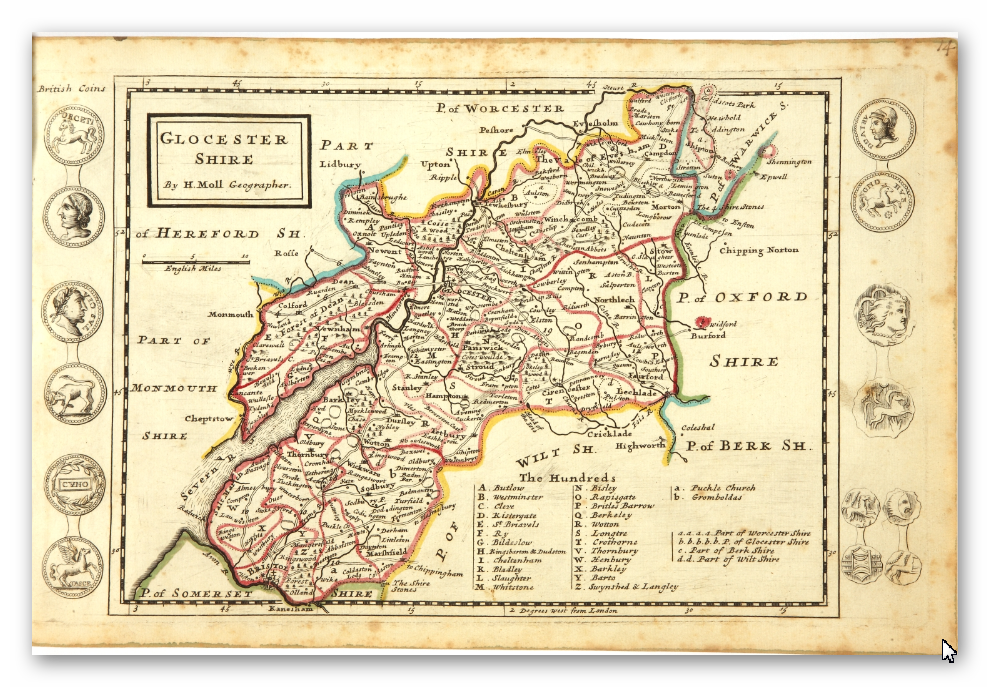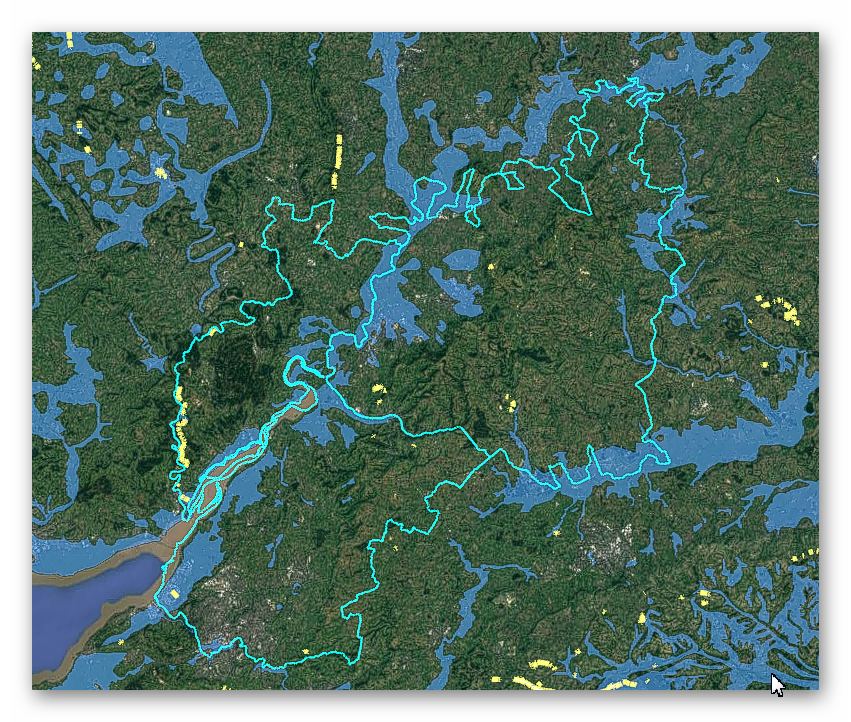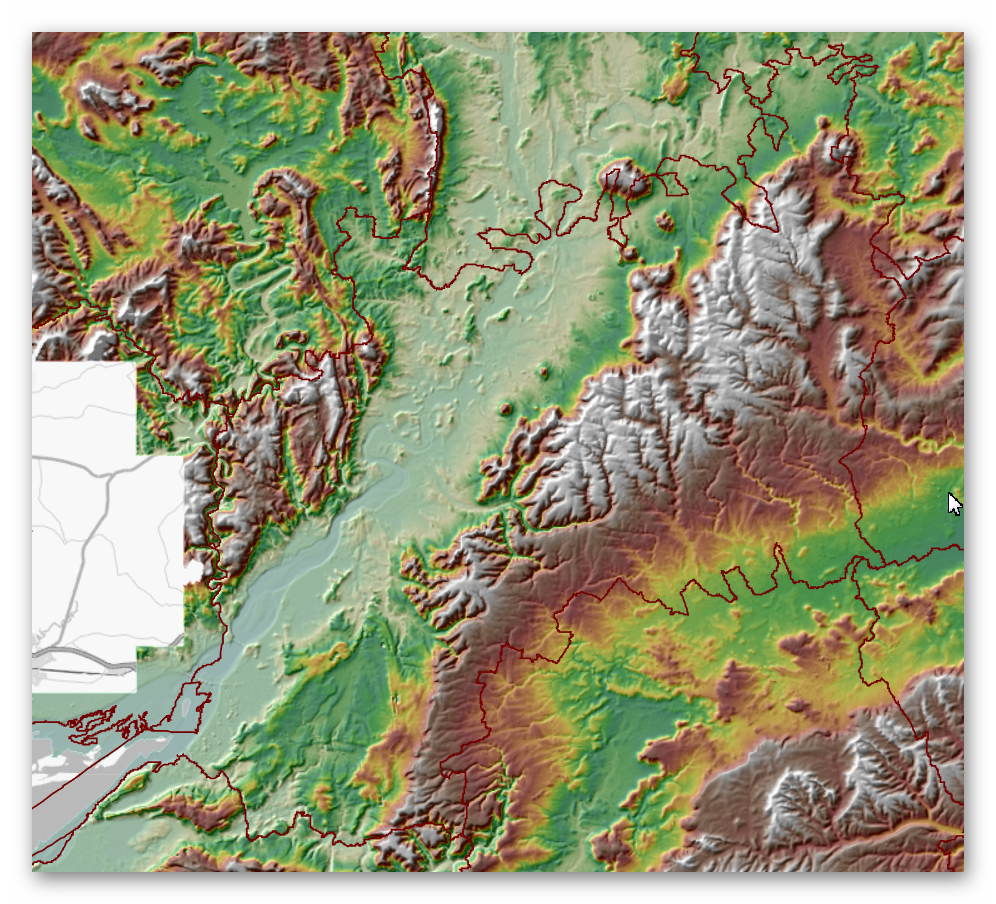Prehistoric Gloucestershire Canals (Dykes)
GE Map of Prehistoric Gloucestershire Canals (Dykes)

Old Map

Geological Landscape

Landscape/Terrain

Database of DYKES (Linear Earthworks) in Gloucestershire
(Click the ‘HE Entry Ref: Number’ (if blue) for more details and Maps)
| Name | HE Entry Ref: | NGF | Length (m) | Overall Width (m) | Ditch Width (m) | Bank Width (m) |
|---|---|---|---|---|---|---|
| Earthwork on Cleeve Common | 1002084 | SO 98672 26282 | ||||
| Dyke camp | 1002095 | SO 83480 08574 | ||||
| Randwick Hill long barrow, round barrows and dyke | 1002107 | SO 82678 07005 | ||||
| Pen Hill dyke | 1002108 | SO 81833 02100 | ||||
| Perrott's Brook dykes | 1003436 | SP 01582 05848 | ||||
| Scrubditch dyke | 1003437 | SP 01014 07720 | ||||
| Part of a linear boundary 590m north of Noade's Leaze Farm | 1004668 | ST7224171123 | ||||
| Haresfield Hill camp and Ring Hill earthworks | 1004861 | SO 82344 09046 | ||||
| Banks and ditch at Glebe Farm | 1015422 | SO 87622 00717 | ||||
| Offa's Dyke: section 800m south west of Stowfield Farm | 1020467 | SO 58291 16609 | ||||
| Offa's Dyke: section 480m south east of Stowfield Farm | 1020468 | SO 59207 17217 | ||||
| Offa's Dyke: section 420m east of Stowfield Farm | 1020469 | SO 59147 17267 | ||||
| Offa's Dyke: section 330m east of Stowfield Farm | 1020470 | SO 59053 17332 | ||||
| Offa's Dyke: section 230m east of Stowfield Farm | 1020471 | SO 58945 17322 | ||||
| Offa's Dyke: section immediately east of Stowfield Farm | 1020472 | SO 58764 17278 | ||||
| Offa's Dyke: section 120m south west of Stowfield Farm | 1020473 | SO 58665 17239 | ||||
| Offa's Dyke: section 330m south west of Stowfield Farm | 1020474 | SO 58571 17078 | ||||
| Offa's Dyke: section 650m south west of Stowfield Farm | 1020475 | SO 58421 16755 | ||||
| Offa's Dyke: section in Highbury Wood, 460m west of Glyn Farm | 1020477 | SO 53887 08670 | ||||
| Offa's Dyke: section in Highbury Plains, 770m south west of Glyn Farm | 1020478 | SO 53819 08443 | ||||
| Offa's Dyke: section in Highbury Plains, 370m west of Birt's Barn | 1020479 | SO 53809 07946 | ||||
| Offa's Dyke: section immediately north west of Coxbury Farm | 1020480 | SO 53856 07611 | ||||
| Offa's Dyke: section immediately south of Coxbury Farm | 1020481 | SO 54003 07355 | ||||
| Offa's Dyke: section 340m south east of Coxbury Farm | 1020482 | SO 54136 07186 | ||||
| Offa's Dyke: section in Church Grove, 240m south west of Ferney Leaze | 1020483 | SO 54629 06693 | ||||
| Offa's Dyke: section 470m west of Wyegate Barn | 1020484 | SO 54708 06296 | ||||
| Offa's Dyke: section on St Briavels Common, immediately south of Sittingreen | 1020525 | SO 53871 03791 | ||||
| Offa's Dyke: section on St Briavels Common, 190m west of Hudnalls Farm | 1020526 | SO 53822 03589 | ||||
| Offa's Dyke: section in Wyeseal Wood, 600m north of Gumbers Land Barn | 1020527 | SO 54482 05822 | ||||
| Offa's Dyke: section in St Margaret's Grove, 170m north east of Gumbers Land Barn | 1020528 | SO 54505 05346 | ||||
| Offa's Dyke: section in Mocking Hazell Wood, 400m south of Lindors Farm | 1020529 | SO 54753 04303 | ||||
| Offa's Dyke: section in Victuals Grove, 230m north of Beaconsfield Cottage | 1020530 | SO 54660 03923 | ||||
| Offa's Dyke: section on St Briavels Common, 90m north of The Cherries | 1020531 | SO 54367 03849 | ||||
| Offa's Dyke: section at Birchfield Cottage | 1020532 | SO 54169 03872 | ||||
| Offa's Dyke: section on St Briavels Common, 230m north of Hudnalls Farm | 1020533 | SO 53971 03846 | ||||
| Offa's Dyke: section on St Briavels Common, immediately west of The Fields | 1020592 | SO 53827 02896 | ||||
| Offa's Dyke: section on St Briavels Common, 220m east of Upfield House | 1020593 | SO 54007 02480 | ||||
| Offa's Dyke: section on St Briavels Common, 400m east of Yewgreen Farm | 1020594 | SO 54074 02345 | ||||
| Offa's Dyke: section on St Briavels Common, 100m south east of Hill Farm | 1020595 | SO 54209 02052 | ||||
| Offa's Dyke: section 65m north of Brook House | 1020596 | SO 54419 01759 | ||||
| Offa's Dyke: section in Cutt's Orchard, 230m south east of Brook House | 1020597 | SO 54541 01519 | ||||
| Offa's Dyke: section on Madgett Hill, 290m south east of Brook House | 1020598 | SO 54557 01456 | ||||
| Offa's Dyke: section on Madgett Hill, 380m south east of Brook House | 1020599 | SO 54577 01366 | ||||
| Offa's Dyke: section on Madgett Hill, 580m west of The Old Mill | 1020600 | SO 54596 00929 | ||||
| Offa's Dyke: section in Caswell Wood, 280m west of Beeches Farm | 1020601 | SO 54503 00377 | ||||
| Offa's Dyke: section in Lippets Grove, 680m WSW of Beeches Farm | 1020602 | SO 54251 00324 | ||||
| Offa's Dyke: section in Passage Grove, 660m west of Sheepcot | 1020603 | ST 54252 99799 | ||||
| Offa's Dyke: section in Shorncliff Wood including the Devil's Pulpit, 790m south west of Sheepcot | 1020604 | ST 54221 99106 | ||||
| Offa's Dyke: section in Worgan's Wood, 800m west of Chase Farm | 1020605 | ST 54332 98654 | ||||
| Offa's Dyke: section in Boatwood Plantation, 320m south west of Chase Farm | 1020606 | ST 54842 98493 | ||||
| Offa's Dyke: section in Danehill Wood, 300m west of East Vaga | 1020607 | ST 54948 98139 | ||||
| Offa's Dyke: section in Chapelhouse Wood, 240m west of the Recreation Ground | 1020639 | ST 53628 95119 | ||||
| Offa's Dyke: section immediately north east of Sedbury sewage works | 1020640 | ST 54249 93343 | ||||
| Offa's Dyke: section 130m north west of Pennsylvania Farm | 1020641 | ST 54456 93238 | ||||
| Offa's Dyke: section known as Buttington Tump, 100m west of Buttington Lodge | 1020642 | ST 54707 93099 | ||||
| Offa's Dyke: section 240m north east of Buttington Farm | 1020643 | ST 55009 92953 | 476 | 26 | 9 | 17 |
Dykes Ditches and Earthworks
Indeed, the modern term “dyke” or “dijk” can be traced back to its Dutch origins. As early as the 12th century, the construction of Dykes in the Netherlands was a well-established practice. One remarkable example of their ingenuity is the Westfriese Omringdijk, stretching an impressive 126 kilometres (78 miles), completed by 1250. This Dyke was formed by connecting existing older ‘dykes’, showcasing the Dutch mastery in managing their aquatic landscape.
The Roman chronicler Tacitus even provides an intriguing historical account of the Batavi, a rebellious people who employed a unique defence strategy during the year AD 70. They punctured the Dykes daringly, deliberately flooding their land to thwart their enemies and secure their retreat. This historical incident highlights the vital role Dykes played in the region’s warfare and water management.
Originally, the word “dijk” encompassed both the trench and the bank, signifying a comprehensive understanding of the Dyke’s dual nature – as both a protective barrier and a channel for water control. This multifaceted concept reflects the profound connection between the Dutch people and their battle against the ever-shifting waters that sought to reclaim their land.
The term “dyke” evolved as time passed, and its usage spread beyond the Dutch borders. Today, it represents not only a symbol of the Netherlands’ engineering prowess but also a universal symbol of human determination in the face of the relentless forces of nature. The legacy of these ancient Dykes lives on, a testament to the resilience and innovation of those who shaped the landscape to withstand the unyielding currents of time.
Upon studying archaeology, whether at university or examining detailed ordinance survey maps, one cannot help but encounter peculiar earthworks scattered across the British hillsides. Astonishingly, these enigmatic features often lack a rational explanation for their presence and purpose. Strangely enough, these features are frequently disregarded in academic circles, brushed aside, or provided with flimsy excuses for their existence. The truth is, these earthworks defy comprehension unless we consider overlooked factors at play.
One curious observation revolves around the term “Dyke,” inherently linked to water. It seems rather peculiar to apply such a word to an earthwork atop a hill unless an ancestral history has imparted its actual function through the ages. Let us consider the celebrated “Offa’s Dyke,” renowned for its massive linear structure, meandering along some of the present boundaries between England and Wales. This impressive feat stands as a testament to the past, seemingly demarcating the realms of the Anglian kingdom of Mercia and the Welsh kingdom of Powys during the 8th century.
However, delving further into the evidence and historical accounts challenges this seemingly straightforward explanation. Roman historian Eutropius, in his work “Historiae Romanae Breviarium”, penned around 369 AD, mentions a grand undertaking by Septimius Severus, the Roman Emperor, from 193 AD to 211 AD. In his pursuit of fortifying the conquered British provinces, Severus constructed a formidable wall stretching 133 miles from coast to coast.
Yet, intriguingly, none of the known Roman defences match this precise length. Hadrian’s Wall, renowned for its defensive prowess, spans a mere 70 miles. Could Eutropius have referred to Offa’s Dyke, which bears remarkable similarity to the Roman practice of initially erecting banks and ditches for defence?
For more information click HERE
Further Reading
For information about British Prehistory, visit www.prehistoric-britain.co.uk for the most extensive archaeology blogs and investigations collection, including modern LiDAR reports. This site also includes extracts and articles from the Robert John Langdon Trilogy about Britain in the Prehistoric period, including titles such as The Stonehenge Enigma, Dawn of the Lost Civilisation and the ultimate proof of Post Glacial Flooding and the landscape we see today.
Robert John Langdon has also created a YouTube web channel with over 100 investigations and video documentaries to support his classic trilogy (Prehistoric Britain). He has also released a collection of strange coincidences that he calls ‘13 Things that Don’t Make Sense in History’ and his recent discovery of a lost Stone Avenue at Avebury in Wiltshire called ‘Silbury Avenue – the Lost Stone Avenue’.
Langdon has also produced a series of ‘shorts’, which are extracts from his main body of books:
For active discussions on the findings of the TRILOGY and recent LiDAR investigations that are published on our WEBSITE, you can join our and leave a message or join the debate on our Facebook Group.
